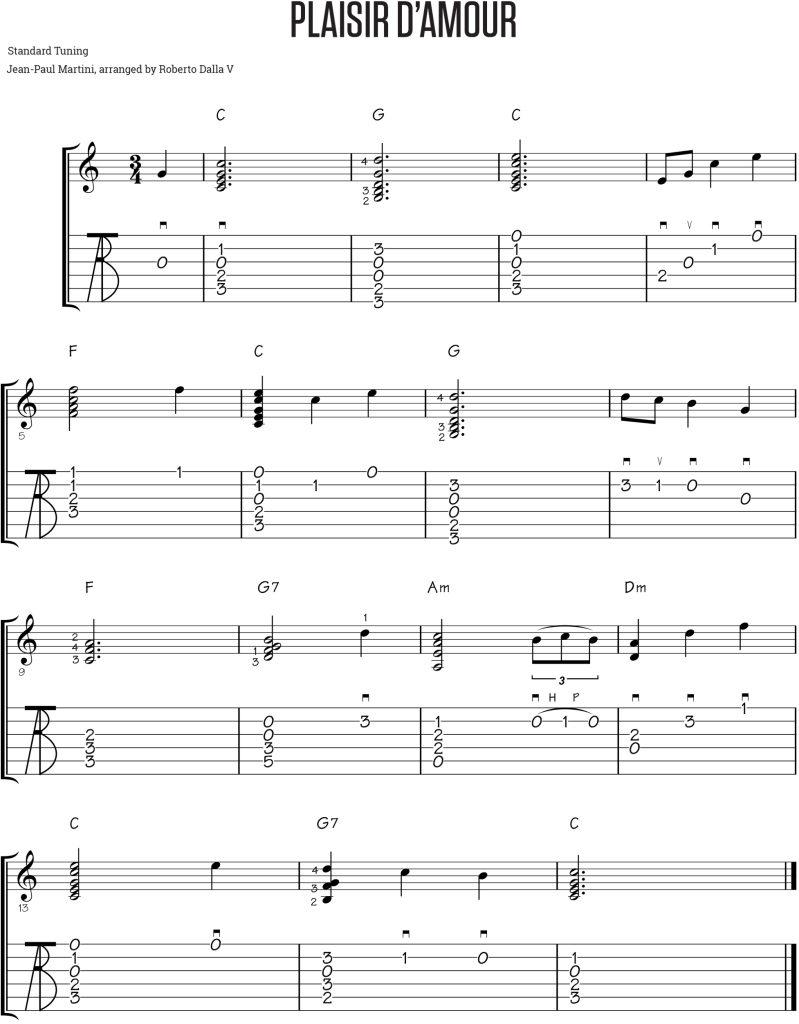![]()
In this column I would like to talk about rest strokes in flatpicking guitar playing. A rest stroke is where you pick a note and follow through in such a way that the pick rests on the next string below the one you are playing. It gives you a more distinctive and stronger tone and helps to accent certain notes. You can play rest strokes for a number of reasons and today I would like to show you how to use them in this fairly simple arrangement of “Plaisir d’Amour.” This is an old French operatic song and it was recorded by Elvis Presley as “Can’t Help Falling In Love.”
The song is in the key of C major and it’s in a 3/4, waltz time signature. We start off picking the third string open and right after that we strum over the C chord. You must control your strum though, strum from the 5th string all the way down to the second string and rest your pick on the first string, don’t play it.

Congratulations you just played your first rest stroke!
Now in measure number 2, you strum a G chord and again as you do so rest your pick on the first string. Probably it will feel a little awkward, but the main reason for using rest strokes is to avoid strumming extra strings by accident, that is the first string in measure 1 and 2.
As you strum those two chords try to emphasize the top note because that’s where the melody is, in fact when doing chords, the rest stroke tends to emphasize the top note.
Let’s point out all the rest strokes in this arrangement: first beat of measure one, two, seven, nine, ten, eleven, twelve and fourteen. In these chords, the melody note is always the top note of the chord, and we’ll be resting the pick on the string below the top note.
If you need some help with fingering these chords look at the standard notation and you will find some suggested fingering. Last but not least, make sure to hold your chords down as long as possible to gain some sustain. Let me know how you like it and if you have questions write me at: info@robertodallavecchia.com
Learn from Robert Dalla Vecchia at TrueFire>>


